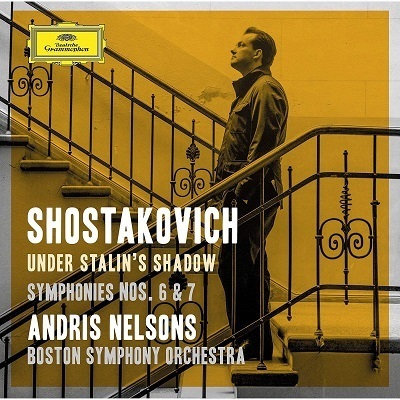

The booklet notes state that of his Symphony No. 6 in B minor, Op. 54 from 1939, Dmitri Shostakovich (1906-1975) said: "Here I wanted to express feelings of springtime, joy and youth." And that is readily apparent within the middle and last movements, with the final movement in particular sounding more like "Rossini meets Circus Music". And I love the way Andris Nelsons hams it up and really brings it home. But what about the long, extended 20 minute Largo that is the first movement. Aside from the one and only powerful climax at the 6:00 mark that Nelsons captures and projects exceptionally well, the rest of the movement is bleak and subdued. The main theme that precedes the climax is doleful, and everything else that follows is very mournful and predominantly quiet and soft. Most of it is scored for a couple of woodwind instruments that seem to be involved in a secret conversation, against a backdrop of extremely soft shimmering strings. Everything is hushed, as if the conversation must not be heard by whoever else is listening in the darkness. And Nelsons well projects this mood of secrecy and contempt being covertly monitored by the Soviet regime. I think it's one of the most typical and memorable Shostakovich statements, and this account by the Boston Symphony Orchestra is chilling, and haunts the mind long after audition.
Everyone seems to gauge the calibre of a performance of the Symphony No. 7 in C major "Leningrad", Op. 60 from 1942, based on how well the famous "invasion" segment in the first movement is done. Well here, for comparison, let's look at the famous Bernstein/Chicago recording. Bernstein's take is emotionally stoked, loud, brutal, violent and quite cataclysmic. Nelsons on the other hand takes the relentless military tactic. As soon as the snare drums begin, they are quick, determined, and never relent. The onslaught is fever-pitched and fatal. Take your pick ... both accounts work. And when, at the end of the symphony, (just like Gustav Mahler had done in his own 7th Symphony), Shostakovich brings back the main theme from the first movement but this time broadens, intensifies and deploys it in a major key, Nelsons and the members of the BSO play that mood swing for all its worth.
I've been following and reviewing this cycle right from the start. Symphony No. 10, Symphonies 5 & 8, and Symphonies 4 & 11. And its finally dawned on me as to why I like them so much. Andris Nelsons and the BSO seem to have found the sweet spot where pinpoint ensemble accuracy and orchestral balance, and highly expressive gestures and emotive insights impact each other and collide and mesh into a perfect union. In other words, music-making at its best!
Jean-Yves Duperron - April 2019